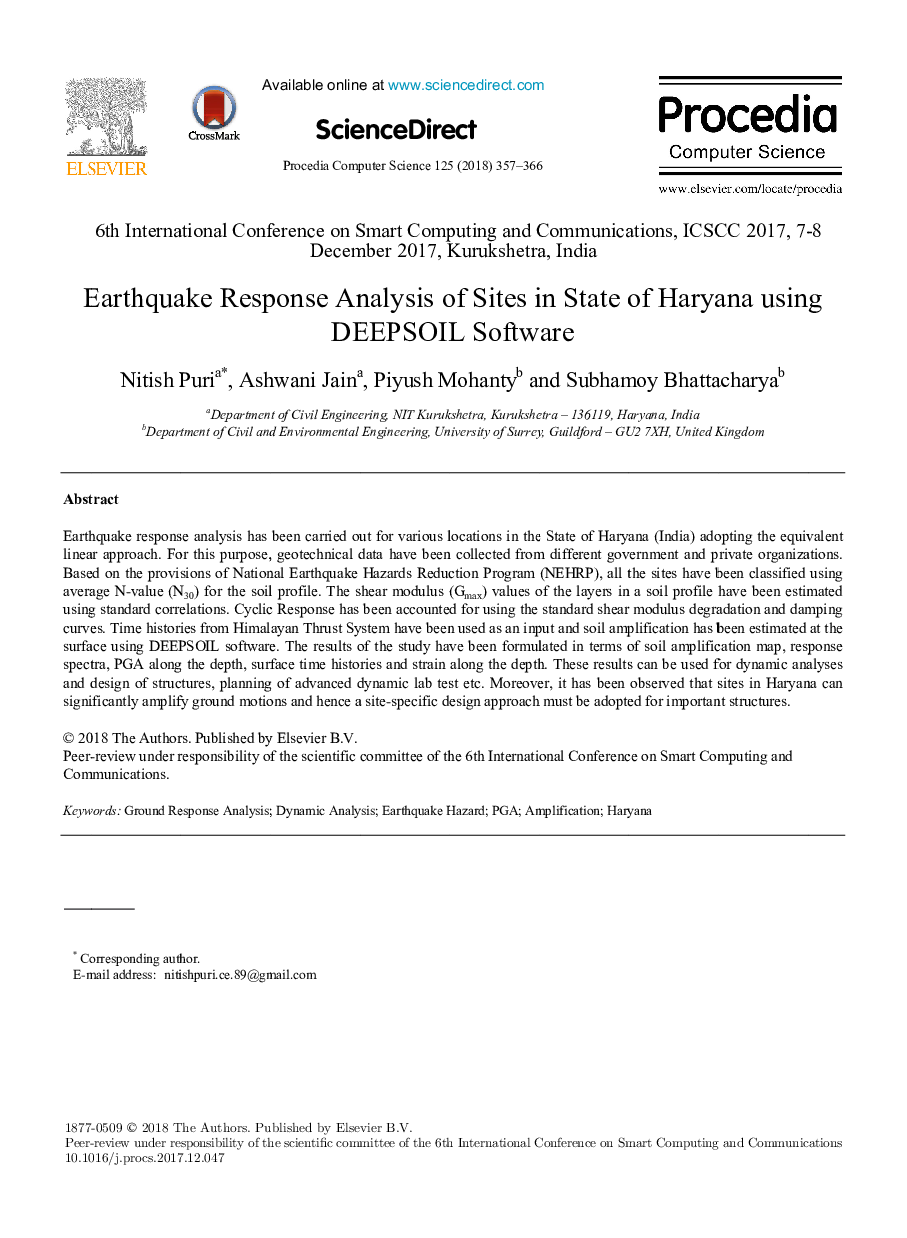| Article ID | Journal | Published Year | Pages | File Type |
|---|---|---|---|---|
| 6900636 | Procedia Computer Science | 2018 | 10 Pages |
Abstract
Earthquake response analysis has been carried out for various locations in the State of Haryana (India) adopting the equivalent linear approach. For this purpose, geotechnical data have been collected from different government and private organizations. Based on the provisions of National Earthquake Hazards Reduction Program (NEHRP), all the sites have been classified using average N-value (N30) for the soil profile. The shear modulus (Gmax) values of the layers in a soil profile have been estimated using standard correlations. Cyclic Response has been accounted for using the standard shear modulus degradation and damping curves. Time histories from Himalayan Thrust System have been used as an input and soil amplification has been estimated at the surface using DEEPSOIL software. The results of the study have been formulated in terms of soil amplification map, response spectra, PGA along the depth, surface time histories and strain along the depth. These results can be used for dynamic analyses and design of structures, planning of advanced dynamic lab test etc. Moreover, it has been observed that sites in Haryana can significantly amplify ground motions and hence a site-specific design approach must be adopted for important structures.
Related Topics
Physical Sciences and Engineering
Computer Science
Computer Science (General)
Authors
Nitish Puri, Ashwani Jain, Piyush Mohanty, Subhamoy Bhattacharya,
